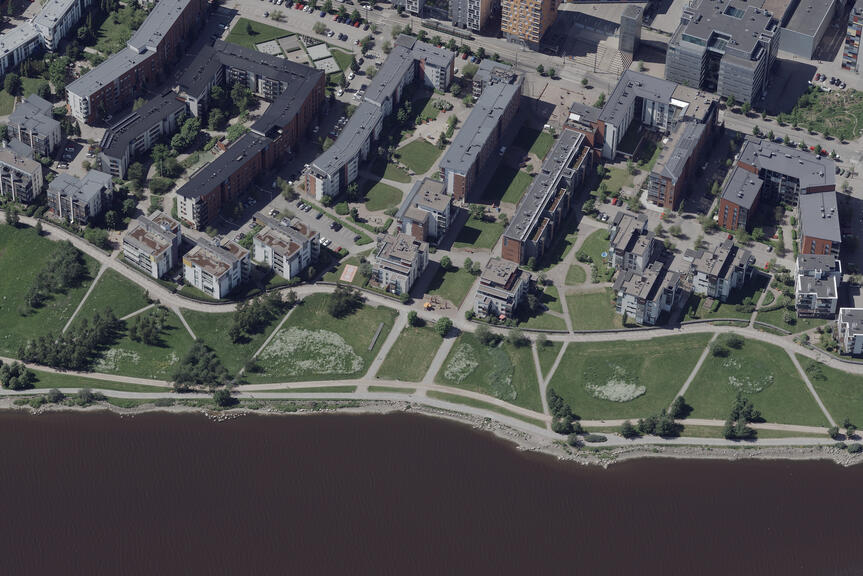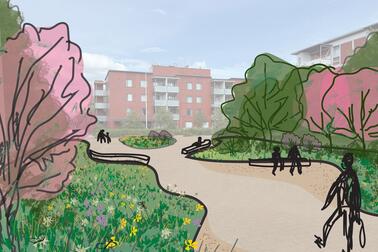
The development of the Arabia and Toukola waterfront park has taken a step forward. The park’s management and development plan was approved in November. Its aim is to increase the functionalities, biodiversity and pleasantness of the park: a barbecue area, recreational pier and more trees and meadows have been planned for the area. The next step is to determine the budget and the exact schedule of the measures.
“The development plan approved in November is a preparatory and preliminary plan that outlines and presents different possibilities for developing the area. Exact measures and their schedules have not yet been determined. In the best case scenario, changes to the area may already be launched this year,” says landscape architect Stefan Eklöf, who is responsible for the plan.
The most important new structures planned for the area are a sun pier and a bridge connecting the routes located on both sides of Kumpulanpuro. However, the soil must be examined carefully before anything new can be constructed. The area consists of reclaimed land and was used for industrial purposes for several decades before it was turned into a park. The land has sunk over the years and is now in need of refurbishment.
“The special type of soil determines the types and schedule of changes that can be made to the park. Among others, turning lawns into meadows, which has been proposed in the plan, requires careful soil examinations. In addition, the sinking of the soil has caused cracks and potholes that need to be repaired for safety. The refurbishment work has been scheduled to begin this year,” Eklöf says.
Aim is to improve biodiversity
The intention is to develop the Arabia waterfront park so that it is more pleasant and serves the users even better. A barbecue area and picnic tables and benches will be constructed to the activity lawn beside the sports park. There will be more benches and litter bins. Functionalities will be increased where it is practicable, while a more natural and diverse appearance will be sought in other parts of the park.
“Increasing biodiversity is at the core of developing the area. New vegetation will be introduced especially in the central and southern parts of the park, including trees and bushes, and the intention is to turn some of the lawn areas into meadows. Different kinds of meadows will be introduced in the area. As the amount of lawn to be cut decreases, money will also be saved,” Eklöf says.
The intention is to maintain open views and an archipelago-like appearance. At the same time, the variety and diversity of the park vegetation will be ensured. The intention is to already start planting trees at the beginning of the refurbishment work.
Residents’ wishes taken into consideration in the plan
The draft management and development plan was available in the Voice your opinion service last year. The opinions and proposals of Helsinki’s inhabitants were gathered and taken into consideration in the planning work.
“It is very important to listen to the residents’ opinions, as the park is there for them. The wishes included a pier and more benches and vegetation. They have all been taken into account in the plan,” Eklöf says.
A change long awaited by the city residents will be implemented when a sun pier will be constructed at the end of the Kaj Franck street. Swimming from the pier is not possible, as the Vanhankaupunginlahti bay is not deep enough and there may be unknown debris on the seabed.
The estimated timeframe of implementing the planned change projects is 10 years. Some of the smaller changes, such as planting new trees and increasing the number of benches and litter bins, can hopefully be started soon.


